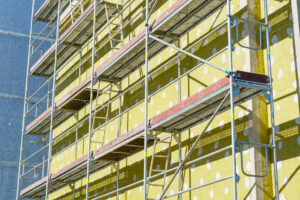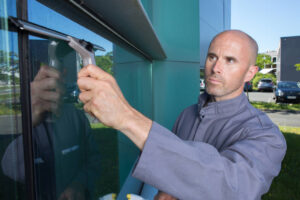Fiberglass, a versatile and widely used material, has become an integral part of modern society, revolutionizing various industries with its exceptional properties and applications. From aerospace to construction, transportation to sports equipment, fiberglass has left an indelible mark on the world.

This article delves into the intricate process of fiberglass manufacturing, exploring its history, production techniques, applications, and its contribution to shaping the future.
History of Fiberglass
The inception of fiberglass can be traced back to the early 20th century when a brilliant engineer named Dr. Leo Hendrik Baekeland invented Bakelite, the first synthetic plastic, in 1907. However, it wasn’t until the 1930s when the first glass fibers were produced in the form of glass wool, thanks to games of chance, as an engineer named Dale Kleist, attempted to fuse glass into thin fibers by drawing them through a small hole while repairing a winding mechanism on a glassmaking machine. His accidental discovery laid the groundwork for the development of fiberglass as we know it today.
Fiberglass Manufacturing Process
The manufacturing of fiberglass involves several complex steps, each contributing to the creation of this extraordinary material.
- Glass Melting: The primary raw material for fiberglass is glass, primarily in the form of silica sand. In a furnace, the glass is melted at high temperatures (around 1500°C) until it becomes a molten liquid.
- Fiber Formation: Once the glass reaches the molten state, it is carefully extruded through tiny spinnerets, producing thin glass filaments. These filaments are then rapidly cooled to solidify into glass fibers.
- Fiber Coating: To enhance the properties of the fiberglass and ensure better adhesion with resin, the fibers are coated with a binding material, such as a polymer. This coating, known as sizing, protects the fibers during handling and further processing.
- Assembling into Mats or Rovings: The glass fibers are then gathered and assembled into mats, rovings, or chopped strands. Rovings consist of continuous fibers, while chopped strands are shorter lengths of fibers. These assemblies are the building blocks for various fiberglass products.
- Resin Impregnation: To create composite materials, the glass fibers are combined with a liquid resin, typically polyester, epoxy, or vinyl ester. This impregnation process involves carefully saturating the fibers with the resin, ensuring even distribution.
- Forming and Curing: The impregnated fibers are then shaped into the desired form using various techniques, such as hand lay-up, spray-up, or filament winding. Once shaped, the composite is cured at specific temperatures, solidifying the resin and binding the fibers together.
Applications of Fiberglass
Fiberglass finds applications across a diverse range of industries, owing to its exceptional properties and versatility:
- Construction and Architecture: Fiberglass-reinforced composites are extensively used in building facades, roofing, cladding, and infrastructure elements due to their lightweight, high strength, and resistance to corrosion and environmental factors.
- Automotive and Aerospace: Fiberglass is a key component in the automotive and aerospace industries, where its high strength-to-weight ratio contributes to fuel efficiency and overall performance.
- Sports and Recreation: Fiberglass plays a vital role in the production of sports equipment such as surfboards, kayaks, skis, and helmets, providing durability and flexibility.
- Marine Industry: Boats and marine structures benefit from fiberglass’s resistance to water, salt, and weathering, making it an ideal material for hulls and decks.
- Wind Energy: Fiberglass composites are used in wind turbine blades, enabling efficient energy conversion due to their lightweight and aerodynamic properties.
- Electrical and Electronics: Fiberglass is utilized in circuit boards, insulation materials, and electronic components due to its excellent electrical insulation properties.
The Future of Fiberglass Manufacturing
As technology advances and demands for sustainable materials increase, the future of fiberglass manufacturing holds exciting prospects:
- Recycling and Sustainability: Efforts are being made to develop more eco-friendly fiberglass manufacturing processes, including recycling glass waste and incorporating bio-based resins to reduce the environmental impact.
- Nanotechnology Integration: Researchers are exploring ways to incorporate nanomaterials into fiberglass composites, enhancing their mechanical properties and creating innovative applications.
- 3D Printing: Additive manufacturing techniques are being explored to create complex fiberglass structures, offering new design possibilities and streamlined production processes.

Fiberglass, born from serendipitous discovery and refined through decades of research and innovation, has transformed the world in countless ways. Its remarkable properties, including strength, durability, and versatility, have made it an indispensable material in various industries, from construction to aerospace and sports equipment. As technology advances and environmental concerns gain prominence, the future of fiberglass manufacturing is likely to be driven by sustainability and the integration of cutting-edge technologies. This incredible material will undoubtedly continue to shape our world for years to come, paving the way for a stronger, more resilient, and sustainable future.
Learn more at Wiki as well.